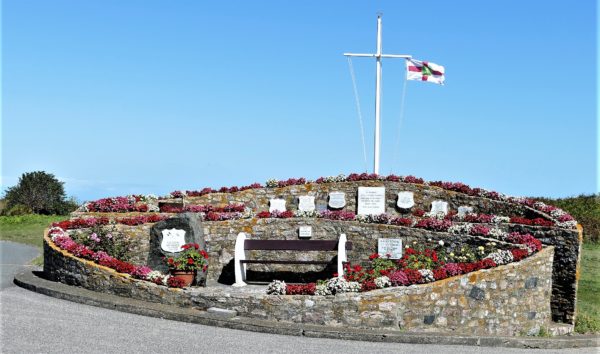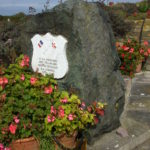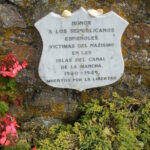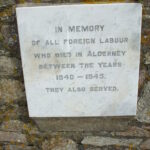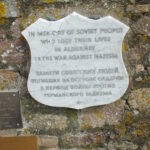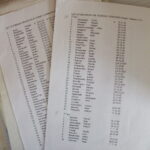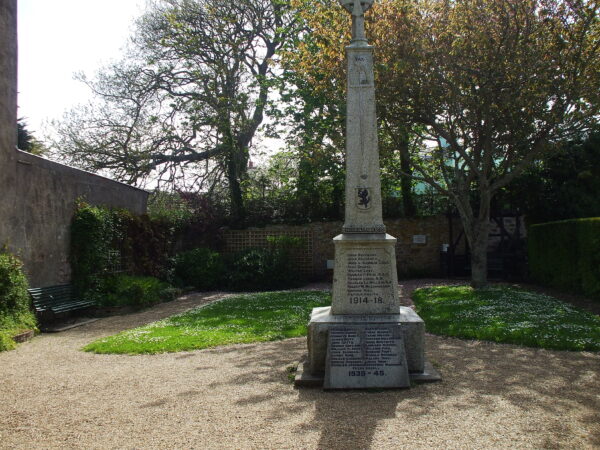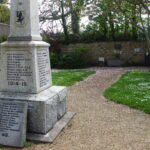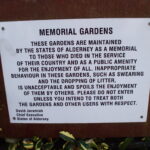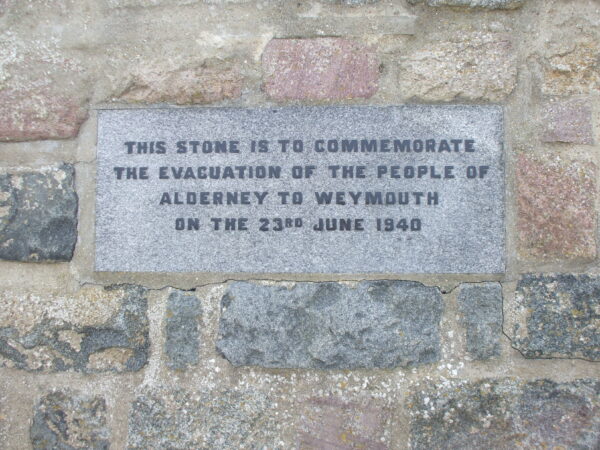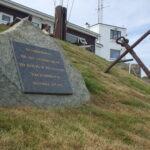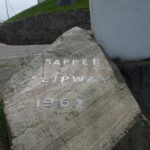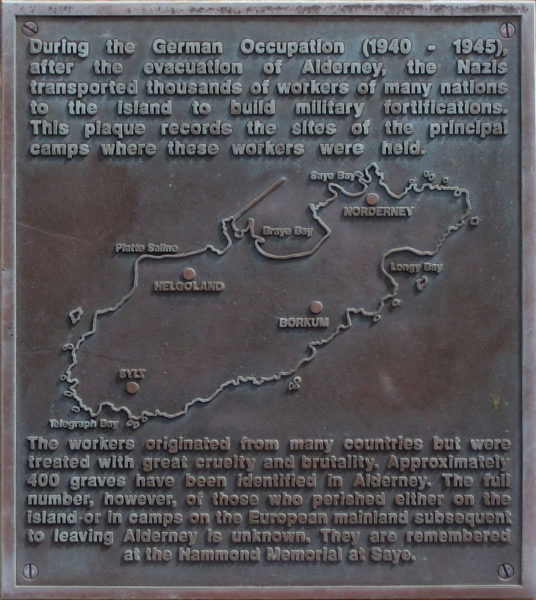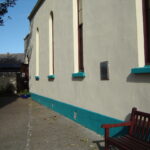
Memorials
Hammond Memorial
The Hammond Memorial overlooks Longis Common where liberating troops found a large burial ground containing the graves of forced and slave labourers. The memorial initially comprised a single small granite boulder given to the island by the French in 1951 to remember their citizens who died during the war. In 1966, a member of the States of Alderney, Mr Bert Hammond, built a larger, two-tier memorial around the original boulder, with the addition of pots of flowers and nine plaques on the second tier to remember the people of different nationalities who died. On the first tier, a tenth memorial plaque, made of the same material as those dedicated to labourers, remembers three members of the Hammond family (including Bert Hammond himself), whose ashes were scattered at the site in the 1980s.
Every May, members of the local community gather at the Hammond memorial for a ceremony to remember those who died in the island during the occupation.
Memorial at Lager Sylt
In 2008, 63 years after the end of the war, a memorial plaque was placed on one of the entrance posts of Lager Sylt. It was placed there by former prisoners and their families, and instigated by a Polish former prisoner. This memorial plaque is still the only one at the site of a camp in the whole of the Channel Islands, although these is an information plaque outside Lager Wick in Jersey.
The memorial text here states:
These gate posts mark the entrance to the former German concentration camp ‘SS Lager Sylt’. Some 400 prisoners died here between March 1943 and June 1944. This plaque was erected by ex-prisoners and their families, 2008.
Alderney's Memorial gardens
The walled memorial garden in St Anne was originally founded as a place of reflection for the memory of the military dead of the First World War. Since then, in addition to the central obelisk was memorial, an additional four plaques have been added to the walls. The first remembers Alderney men and women who volunteered to serve in the armed forces in the Second World War. The second is dedicated to Sapper Onions. These plaques are both made of polished blue granite with similar lettering and are the same size, indicating that they were erected at the same time.
On the wall furthest away from the entrance to the garden is a modest central plaque made of bronze which commemorates the 50th anniversary of the ‘return from exile after the German Occupation’, and includes part of Winston Churchill’s famous speech in which he announced the liberation of the Channel Islands. A couple of metres away from this is a plaque commemorating 50 years of ‘loyal voluntary service’ to Alderney from 1951 to 2001 of the Women’s Voluntary Service / Women’s Royal Voluntary Service (WVS/WRVS). This organisation gives aid to civilians in need and played an important role in helping people during the war, especially the Blitz. For years, the WRVS in Alderney tended Sapper Onions’ grave, which is in St Anne’s churchyard.
Memorial attached to St Anne's church, Alderney
Outside St Anne’s church in Alderney records a nearby burial place of 45 ‘Soviet citizens’. The memorial text reads:
1941-1945
Near this place are buried 45 Soviet citizens who died in Alderney. Their names are recorded in the States Office.
The group photographed next to the plaque are shown here to indicate the size of the plaque and also to mark the visit of delegates of the International Holocaust Remembrance Alliance (IHRA) to Alderney in 2019.
Memorials relating to evacuation and Homecoming
At the harbour in Alderney are two memorials: one to the evacuation of the population to Weymouth, and the second to remember the 6oth anniversary of the ‘return of evacuees’ in 2005. This was also the year that Homecoming Day became a holiday and returned to prominence as a day of memory in Alderney. Close to both of these is the ‘Sapper Slipway’, built in 1962 to remember Sapper George Onions.
In some ways, Homecoming Day is Alderney’s equivalent of Guernsey and Jersey’s Liberation Day. It is held in December and marked by a church service.
Memorial plaque attached to outside wall of Alderney Museum
On the outside wall of Alderney’s museum can be found a bronze plaque marking the locations of the island’s labour camps Norderney, Helgoland, Borkum and Sylt.
The memorial text reads:
During the German Occupation (1940-1945), after the evacuation of Alderney, the Nazis transported thousands of workers of many nations to the island to build military fortifications. This plaque records the sites of the principal camps where these workers were held.
The workers originated from many countries but were treated with great cruelty and brutality. Approximately 400 graves have been identified in Alderney. The full number, however, of those who perished either on the island or in camps on the European mainland subsequent to leaving Alderney is unknown. They are remembered at the Hammond Memorial at Saye.


